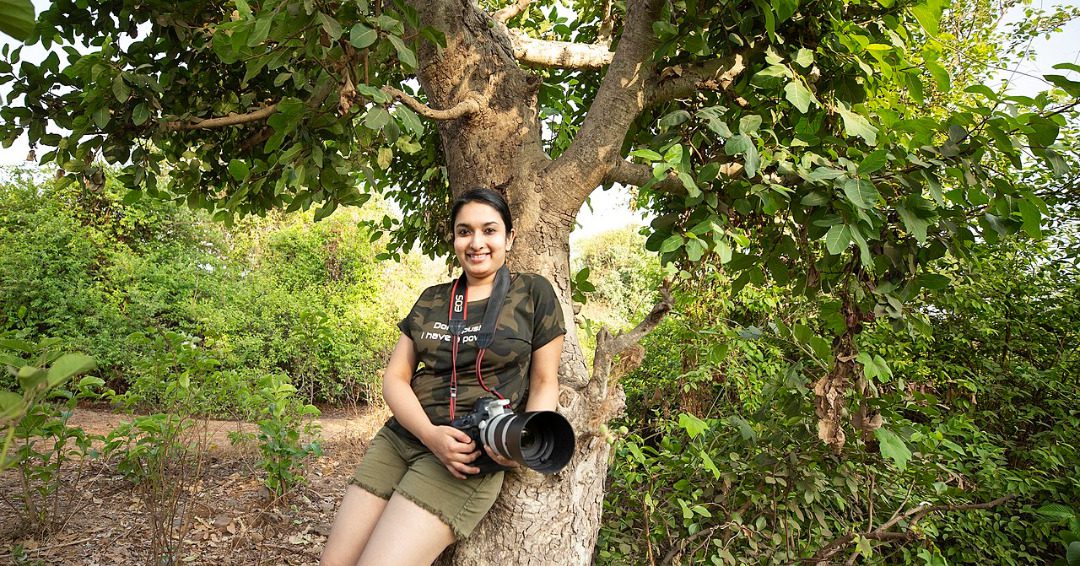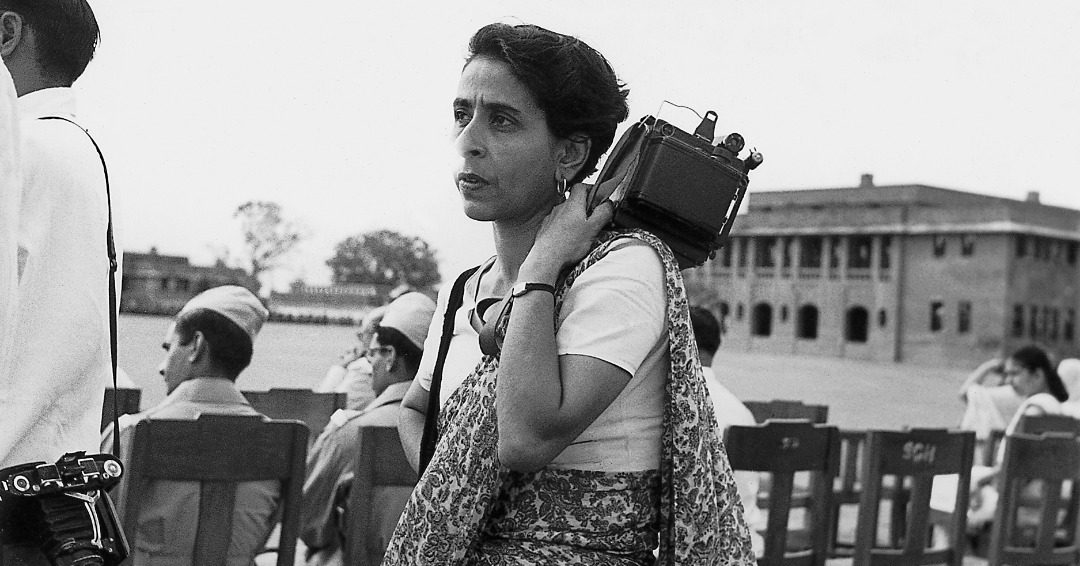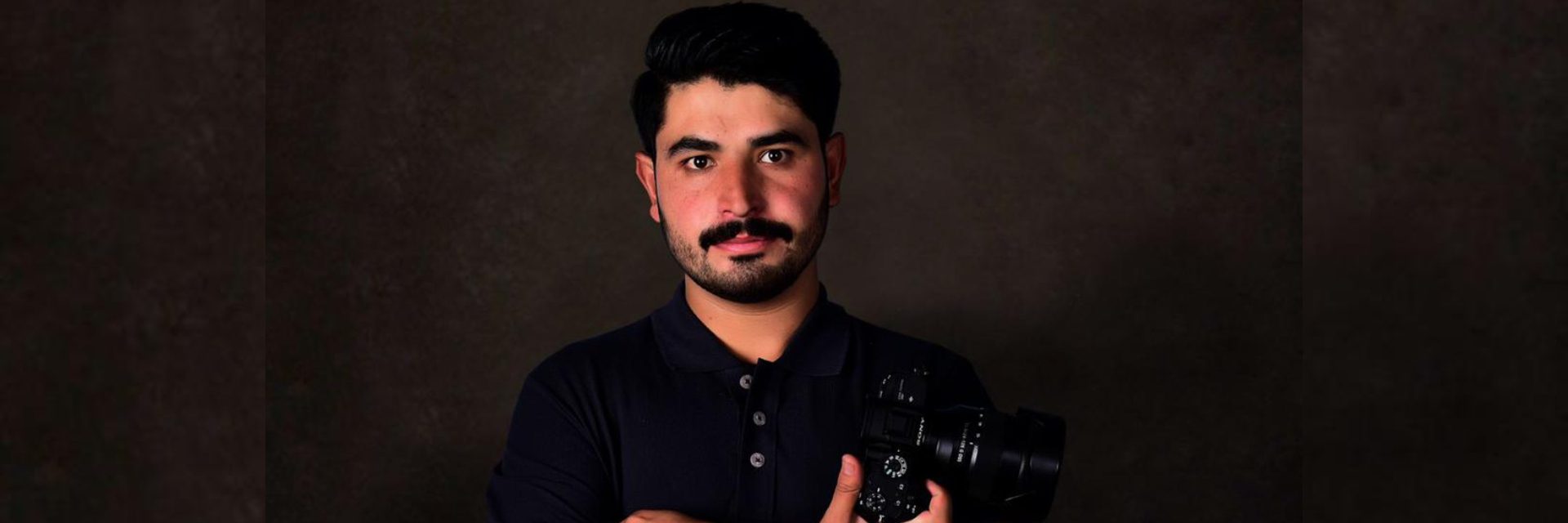(January 17, 2023) In the last month of 2022, Aquin Mathews was thrilled to see his idea turn into reality when ‘Hyderabad on Wheels’ – India’s first photo exhibition on wheels was flagged off. By collaborating on this unique idea, Telangana State Road Transport Corporation (TSRTC) became the first state transport department in the country to promote the concept.
While ‘Hyderabad on Wheels’ is the latest feather on the ace photographer’s cap, Mathews has garnered immense praise for founding India’s longest running international photography festival – the Indian Photo Festival (IPF), which successfully completed its eighth edition in 2022.

Aquin Mathews
“As the artistic director, every edition is special to me. However, a notable high point was having National Geographic come on board as a partner and the fact that the festival has been able to facilitate photography grants up to ₹10M (roughly £100,000) so far,” Aquin says, speaking exclusively to Global Indian.
Born and raised in Kerala, Aquin is a globetrotter. Apart from India, he has curated several photography exhibitions in France, Australia, New Zealand and Georgia, and is currently the advisor to the Auckland Festival of Photography, in New Zealand.

Aquin Mathews during inauguration of ‘Hyderabad on Wheels’ with TSRTC vice chairman and MD, VC Sajjanar
He has also been a judge for several photography competitions including, Portrait of Humanity by the British Journal of Photography, the Print Swap by Feature Shoot Magazine, and has addressed various art and literary festivals in the last few years.
The Indian Photo Festival
Over the years, the Indian Photo Festival has successfully built an ecosystem for the Indian photographers, with a wide-ranging bouquet of offerings in the form of exhibition opportunities, photography grants, portfolio reviews, free mentorships from world-class mentors and more.

Indian Photo Festival
“Today IPF has become a great networking platform for photographers in the country. They get to meet editors, collectors, curators, gallerists, and many other experts from around the world. It’s now one of the most highly-awaited events on the Indian art calendar,” he mentions.
IPF is not just a platform for professional and aspiring photographers, but also for the photography lovers and the public, offering a wide range of photography from India and around the globe. Through talks, discussions, exhibitions, screenings, book launch and workshops, people upskill their understanding of the art.

Indian Photo Festival
The festival doesn’t just promote the art of photography but also touches upon social issues through the medium. One cause is the lack of support for the Indian photography community, which led Aquin to establish the festival back in 2015. Through years’ worth of passion and dedication, the festival has come a long way, although fundraising, Aquin admits, remains a challenge.
It’s all for a purpose…
“There is a lot of interest in photography in India but not enough avenues for people to discuss, appreciate, and examine the medium,” remarks Aquin. “It’s essential to have platforms to support photography and photographers, but these spaces are dwindling fast due to a lack of institutional and governmental support,” he adds. The pandemic, he reasons, has only contributed to the problem.

Kids at Indian Photo Festival
“Even now, there are only a handful of galleries which show photography year-round,” he remarks. The Hyderabad Centre for Photography (HCP) is one example. “HCP is a dedicated space that presents and develops contemporary idiom in the art, showcasing photography year-round,” tells Aquin who is the director of HPC.
Advocate of clicking photos with mobile phone cameras
Surprisingly, Aquin strongly advocates taking photos with mobile phone cameras and calls it ‘one more medium for creating images.’ “In fact, the mobile phone made photography more accessible and so popular that today we can’t imagine a world without images,” he remarks.
“The main reason I advocate clicking pictures with mobile phones is because there is a notion that you need costly camera gear to capture beautiful images, and I want to break that.”

Picture clicked by Aquin with his mobile phone
To emphasize how beautifully images can be captured with mobile phones, Aquin has even published a photo book with images shot only on mobile. “More than the medium, how you photograph and why you photograph is really what matters at the end of the process,” remarks the photographer.
The man behind the unique drone project
Always looking forward to do something new, Aquin has worked on a distinctive drone project – a series of images shot using drone camera exploring the landscape of Hyderabad and surrounding areas fresh after a few spells of rain.

The aerial view of the winding roads in the Ananthgiri Hills | Picture clicked in the drone project of IPF
“Monsoon is the most awaited season of the year especially in a place like Hyderabad. The effect of the monsoon in the landscape is pretty interesting. A complete series has been shot using a drone camera, primarily in the Hyderabad countryside,” he says. “The drone shots offer a completely different perspective which many of us might have never seen before.”
The primary idea, in Aquin’s mind, was to play with colours and contrasts and also to explore the patterns and shapes that appear from an aerial angle. “I wanted to create a great experience for the viewers and transport them to a different world through the drone project,” he tells.

An aerial view of the kayak’s at the Kottapalle Lake | Picture clicked in the drone project of IPF
Away from the run-of-the-milieu
Not many leave a corporate profession behind to follow one’s heart to an artistic career. Still, Aquin Mathews chose to be different from the milieu. After graduating with a Bachelors degree in computer science from the University of Kerala, and an MBA from the National Institute of Business and Management, he worked in the corporate world before quitting to pursue photography fulltime.
He has since gone on to become the founder of India’s longest running international photography festival and is the brain behind unique ideas in the world of images.

Aquin during the inauguration of ‘Hyderabad on Wheels’
“My interest for photography started in my childhood, when I would play around with my dad’s camera and handycam,” tells the ace photographer.
The childhood passion remained a hobby all through college and the eight-years he spent in the corporate world. But he wanted to be different, and make a difference too, and finally, took the plunge into full-time photography, embarking on a journey filled with one milestone after the next.

Aquins’s photography | Lone tree in Vikarabad, Telangana
The globetrotter
As his family lives in the US, Aquin frequently flies to the country, although he has been living in Australia for the last twelve years. Primarily there for work, he is immersed in commercial photography projects. “I live and work between Australia, US and India,” says the photographer and curator.
When he’s not busy taking photographs, Aquin explores nature in every way he can. “You can find me off-roading, exploring unchartered territories and taking the road less travelled,” he says.

Aquin’s photography | Flight on a cloudy day
- Follow Aquin Mathews on LinkedIn and Instagram
- Follow Indian Photography Festival on Instagram, Facebook, Twitter and its website




